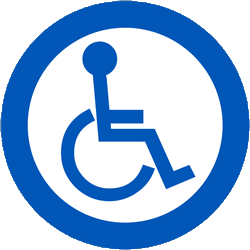Games for Everyone: How Consoles Are Becoming a Tool for Rehabilitation and Social Adaptation
In recent years, video games have ceased to be just entertainment for teenagers and young adults. Today, consoles and gaming technologies play an important role in the lives of people with disabilities, becoming not only a source of joy, but also a powerful tool for rehabilitation, social adaptation and development. With the help of modern gaming platforms, specialized controllers and innovative technologies, people with disabilities gain access to new ways of interacting with the world around them, communicating and improving their physical and psycho-emotional state.
Rehabilitation through play: development of motor skills and physical activity
One of the most striking examples of the use of games in medical and rehabilitation practice is the gamification of physiotherapy exercises. Video games that require movement are actively used to restore mobility and coordination in people who have experienced injuries or suffer from various diseases.
In this context, special attention should be paid to systems using motion sensors, such as Xbox Kinect or Nintendo Wii, which allow players to interact with the game using body movements. These platforms use sensors to track the player’s movements, making it possible to conduct rehabilitation exercises in an engaging, game-like manner. For example, a patient can perform physical exercises — stretching, bending, walking, and other movements — to help their character in the game. This approach not only helps improve physical condition, but also makes the rehabilitation process more motivating and less boring.
Virtual reality (VR) also opens up new horizons for rehabilitation. With the help of VR games, people with mobility impairments can “travel” through virtual worlds, performing various physical actions that stimulate the muscles and joints. For people with limited mobility, such activities can be a significant step towards restoring functional abilities.
Social Adaptation and Inclusion: Games as a Means of Communication
One of the main problems of people with disabilities is social isolation. Limited physical abilities or problems with mobility often become an obstacle to active participation in society, which leads to feelings of loneliness and depression. Video games provide people with disabilities with a unique opportunity to be part of a community without leaving home.
Multiplayer online games allow you to communicate and interact with people from all over the world, regardless of physical limitations. Games such as World of Warcraft, Fortnite or Minecraft provide an opportunity not only to play in a team, but also to maintain social connections, create alliances, and participate in virtual events. For people with disabilities, this may be the only way to communicate and stay in touch with friends.

In addition, gaming platforms such as PlayStation and Xbox have begun to actively develop accessibility features, allowing players with hearing, vision and motor impairments to customize the interface to their needs. For example, subtitles, the ability to change contrast, voice control and adaptive controllers provide comfortable interaction with the game.
The Xbox Adaptive Controller was developed especially for people with physical limitations – a controller with customizable buttons and interfaces that allows you to connect various devices, such as buttons, joysticks or pedals, which significantly expands the gaming experience for people with limited mobility.
Psycho-emotional recovery: games as a way to relax
Video games can have a positive effect on the psycho-emotional state of players, especially those who face depression, anxiety and stress, which is quite common among people with disabilities. Games help to escape from reality, relax and immerse themselves in fantasy worlds where everything is possible. This “escape” from everyday life helps reduce stress and anxiety.
In addition, gamification of therapeutic methods, such as puzzle-solving or strategy games, can help improve cognitive functions and develop decision-making skills. For people with disabilities, this can be an important tool not only for relieving stress, but also for maintaining mental activity and development.
Adaptation of technologies: accessibility for everyone
Today, many gaming companies and developers take the issue of accessibility of their products for people with disabilities seriously. Game developers are actively implementing mechanisms that allow content to be adapted to the needs of each player, regardless of their physical or cognitive characteristics.
An important step in this direction has been adaptive controllers, such as the above-mentioned Xbox Adaptive Controller. This controller allows you to customize controls to the needs of the player, providing more convenient access to games for people with various forms of disabilities, including limited mobility, visual impairment, and hearing impairment.
In addition, modern games offer features such as subtitles, high interface contrast, the ability to adjust the pace of the game and the mode for people with visual or hearing impairments. Many games also integrate voice control, which makes the game process accessible to people with limited motor skills.
Conclusion:
Game consoles have long gone beyond simple entertainment and are becoming important tools in the lives of people with disabilities. They not only provide physical rehabilitation by improving motor skills and coordination, but also help people cope with social isolation by creating space for communication and self-expression. Modern games and adaptation technologies make the gaming process accessible to people with various forms of disabilities, and innovative approaches to rehabilitation open up new horizons in restoring health and psycho-emotional state.
Thus, video games are becoming an important element of an inclusive society, offering everyone the opportunity to participate, develop and enjoy life – regardless of physical or mental limitations.





